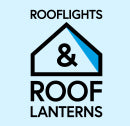Can Skylights be Installed In Any Roof Type?
Can Skylights be Installed in Any Roof Type?
When you need some extra light in your home or business it’s only logical to consider installing skylights. Studies indicate that the average skylight allows as much as 5 times more light to enter a space than a traditional wall window. All that extra light can mean lower lighting bills, better air circulation and even increased home valuation. But before you can go ahead and have the team from Rooflights & Roof Lanterns install skylights on your home or business there is one thing you need to know: Can skylights be installed in any roof type? Read on to find out.

Can You Install Skylights In Any Type of Roof?
Skylights are incredibly versatile and can be installed in a multitude of roof configurations that use a multitude of different roofing materials. But the fact is they cannot be installed on all roofs. The most important, (though not only), consideration is whether the roof will be able to support the weight of the skylights. Most will, some will not.
Problematic Roof Types
Most roofs are constructed using either the stick-frame technique or the truss-frame technique.
The stick-frame technique utilises individual rafters running parallel to one another and spaced as much as 4 feet apart. This type of roof is usually considered a good match for skylights.
The truss-framed roof, however, is not such a great match. Truss-framed roofs (more common on commercial buildings rather than residential ones) are composed of prefabricated triangular elements that are nailed, bolted or even welded together. These roofs are not meant to have holes cut in them as doing so can undermine the overall integrity of the roof.
You may find an installer who is willing to try installing a skylight in a truss-framed roof but chances are the skylight will need to be small so that it causes as little disruption as possible to the truss-frame structure. In most cases, the skylight would be so small as to be basically useless since ideally, a skylight should take up between 5 and 10% of the square footage of the room it is installed above.
In addition, many flat roofs are poor choices for traditional skylights because they do not allow for rainwater to drain away naturally. In time the standing water on and around the skylight may eventually find a way in and/or the glazing on the skylight may wind up stained.
But those are not the only instances when installing a skylight may be problematic. There are some spots on a roof where the structure - that is, the roof framing - is simply too complex to support the installation of a skylight.

The Best Type of Roof for Installing Skylights
Although it may be possible to install skylights on some flat roofs, sloped roofs are without question the best type of roof for accommodating skylights. The slope allows for rain to run off, discourages the collection of snow or standing water and, if you have skylights that open, will usually do a better job of catching a breeze than flat skylights will.
But even among sloped roofs, some are better than others when it comes to accommodation skylights. The degree of compatibility usually comes down to the roofing material. Metal roofs can be tricky and there are definitely some types of metal that are more agreeable than others. Copper, for instance, is a solid choice while steel is not.
If your roof is covered in asphalt shingles a skylight can be installed with relative ease in most cases. On the other hand, a roof covered in Spanish-style ceramic tiles can present challenges. That doesn't mean you cannot install a skylight on such a roof. Only that you will need to make sure the company that does the installation has copious experience.

What About Size Considerations?
You have a lot of choices when it comes to the size of your skylights, but chances are those choices will be somewhat constrained by the type of roof you have. Truss-framed roofs, whether on a commercial or residential structure do not typically provide enough room to make a skylight installation practical.
The stick-frame roof featuring parallel beams set several feet apart is usually the best choice for placing a large skylight. Still, you will need to be sure that after cutting a large hole in the roof the remaining frame structure will be strong enough to support the weight of the skylight. The company doing the installation may need to introduce additional support before they drop in the skylight.
Contact Rooflights & Roof Lanterns
The vast majority of residential and commercial roofs will accept skylights. There are some, however, that are not a good match. If you have questions about whether your particular roof is a good candidate for a skylight installation get in touch with the team at Rooflights & Roof Lanterns by calling 020 8087 2004.
- Moshin






